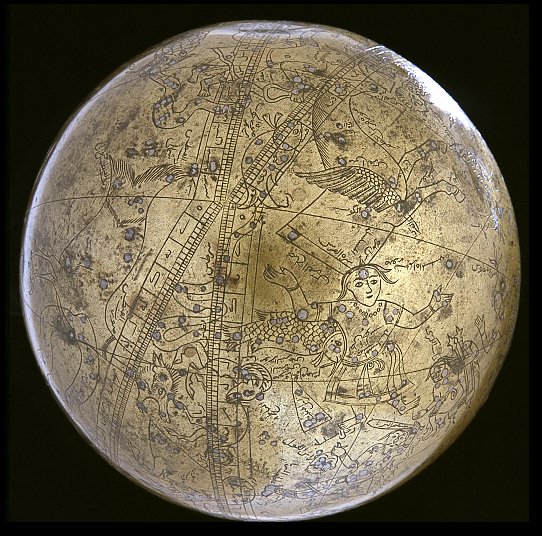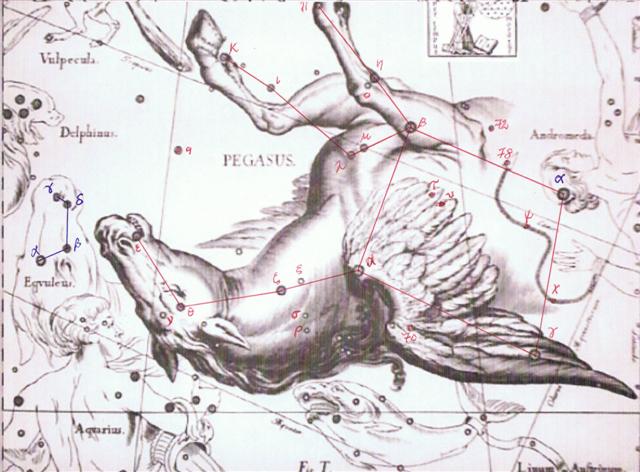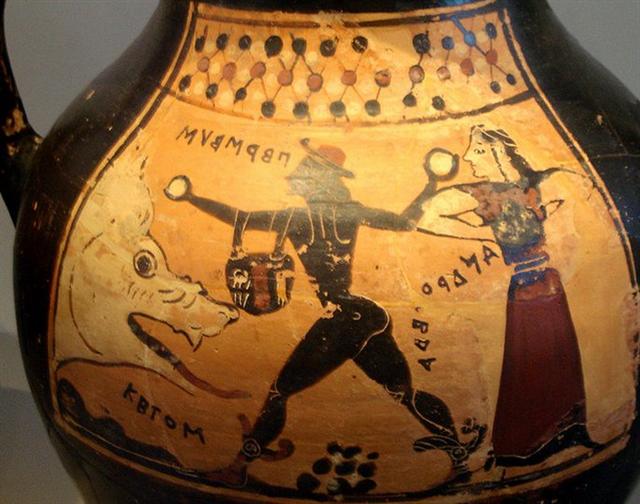378. However, the return of the Sun at heliacal Sirrah had not been the perspective in the Golden Age of the Bull, where instead the whole 88 day long season before the return of Betelgeuze seems to have been a dark time: ... The total number of notches (88) not only coincides with the number of days in 3 lunations (88.5) but also approximately with the number of days when the star Betelgeuse (α Ori) disappeared from view each year between its heliacal set (about 14 days before the spring equinox around 33,000 BP) and its heliacal rise (approximately 19 days before the summer solstice). Conversely, the nine-month period when Orion was visible in the sky approximately matched the duration of human pregnancy ...
Since then the precession had moved the Navel of the Horse ahead with 64 days in relation to the Sun's cardinal points and no longer was there a long stretch of dark time in front of her. Instead the established dark days ahead could as always have ended with April 13 (103 = 80 + 23 = 84 + 19). This date in the structure of the Sun calendar had presumably been chosen because 4-13 could be memorized as 413 = 14 * 29½.
A glimmering of light will now be cast upon the peculiar Chinese customs: ... In China, every year about the beginning of April, certain officials called Sz'hüen used of old to go about the country armed with wooden clappers. Their business was to summon the people and command them to put out every fire. This was the beginning of the season called Han-shih-tsieh, or 'eating of cold food'. For three days all household fires remained extinct as a preparation for the solemn renewal of the fire, which took place on the fifth or sixth day after the winter solstice [Sic!] ... When the cycle of 14 * 29½ = 413 days had been completed a new such ought to begin and this would have necessitated going back in time to December 31 (= 413 - 48). The number of ancient constellations were 48 and beyond day 364 (December 30) they could have been imagined as ruling in the nights when the Sun had completed his cycle for the year and vanished. ... Ptolemy scientifically followed with those now known as the ancient forty-eight, in the 7th and 8th books of the Syntaxis, twelve of the zodiac with twenty-one northern and fifteen southern, made up by 1028 [= 2 * 514] stars, including 102 αμόρφωτοι, all probably from Hipparchos, although with some acknowledged alterations by himself ... The 5th day after the winter solstice was day 355 (December 21) + 5 = 360 (December 26) and this could have been perceived as the end of the Sun circuit. 355 - 80 (0h) = *275. However, the Julian equinox was day 84 (= 80 + 4) and then also the day for the winter solstice should have come 4 days later, viz. in December 25 (359 = 355 + 4), which means that the end of the Sun cycle could have come in day 360 + 4 = 364 = 84 + 280 (= 12 weeks + 40 weeks). The new fire would then be alighted in day 365 = 359 + 6 and cold food could have been served in December 28-30. Significantly Manus Catenata (the Chained Hand of Andromeda) and 78 Pegasi had been at the Full Moon around the winter solstice at the time of the Bull. Instead of orienting time from the position of the Sun it was here the place of the Full Moon which should be used, and the lifeless hand hanging down at left in Ga5-1 could refer to the immobilised hands of Andromeda.
|
||||||||||||||||||||||||||||||||||||||||||||||||||||||||||||||||||||||||





